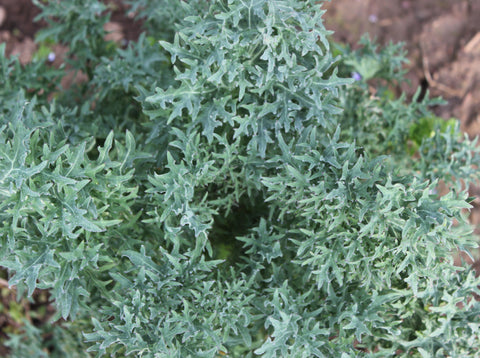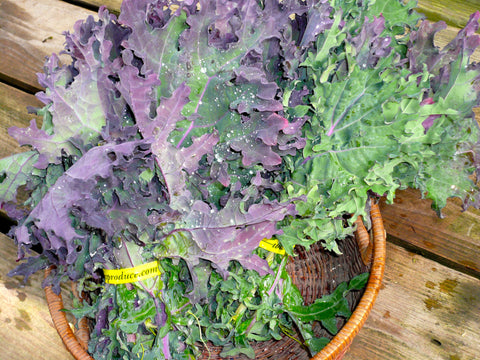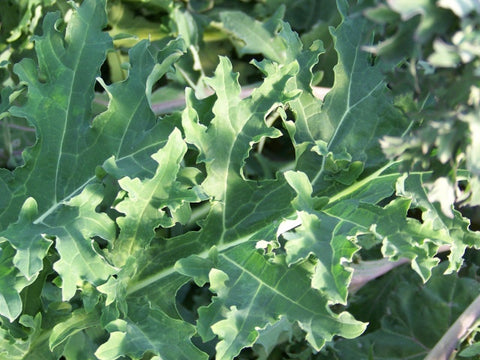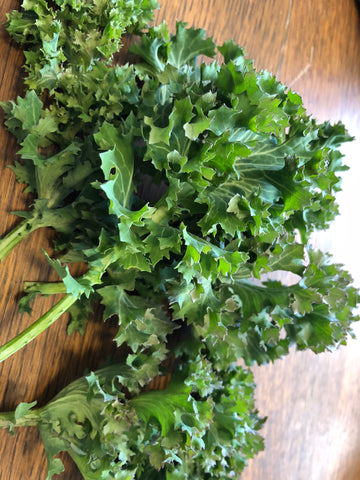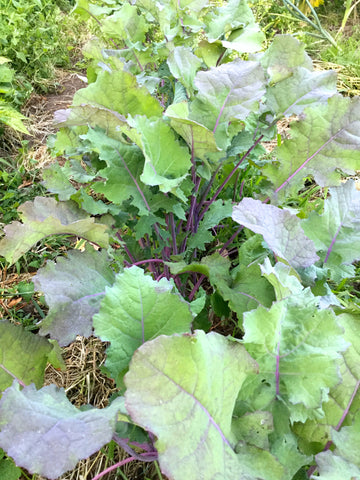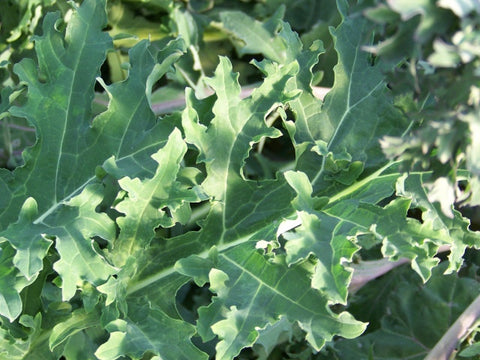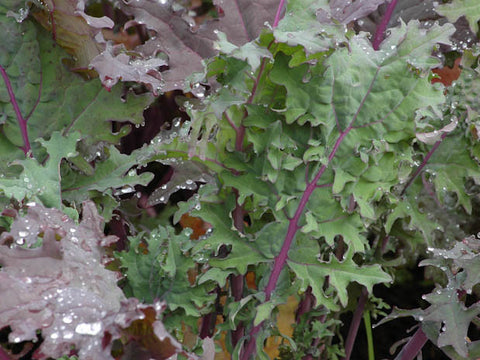SEED CALCULATOR ❌
Number of Plants 0
Weight 0 oz
at 0 seeds per foot

Siberian Kale
Brassica napus pabulariaCertification
Type
Color
Specialty
Heritage
Season
Green-light purple oak leaf Siberian kale. Selection towards green leaves, purple stems. Leaves are more tender with a milder flavor than European B. oleracea kales so young leaves are better for salads. Excellent steamed or sautéed in soups, stews and pastas, diced fresh in salad. Probably the easiest kale to grow in the Pacific Northwest. Napus kales are very winter hardy to at least 10˚F. Has better resistance to root rot in waterlogged soils than European kale. Also known as Ragged Jack, Canadian Broccoli, Russian Kale and Fearing Kale. For B. oleracea see Kale.
There is much genetic evidence that the three crops of Brassica napus, rutabaga, Siberian kale and canola, originated from a natural cross between turnip (B. rapa) and one of the B. oleracea species. B. napus probably developed in Northern Europe, they first appear in written record in the Middle Ages as an oil seed crop. Red Russian and Siberian are the two most well known varieties in the U.S.. However many others have been developed from these lines. The Red Russian variety of siberian kales may have a different story. Tim Peters of Peters Seed and Reseach did an experiment to retrace the evolution of B. napus. He first crossed a chinese cabage (B. rapa) with a European kale (B. oleracea). He did these crosses with a bud pollination technique, which he says "lets the two species have more time to get to now each other". After the first cross the result was a beautiful Siberian kale (B. napus). then he crossed in black mustard (B. nigra). This resulted in the Red Russian type (B. napus?) with its distinct color and leaf shapes. So some of the B. napus species are two way mix-ups and some are three way mix-ups. Delicious siberian kale recipes.

-
Price List
Green-light purple oak leaf Siberian kale. Selection towards green leaves, purple stems. Leaves are more tender with a milder flavor than European B. oleracea kales so young leaves are better for salads. Excellent steamed or sautéed in soups, stews and pastas, diced fresh in salad. Probably the easiest kale to grow in the Pacific Northwest. Napus kales are very winter hardy to at least 10˚F. Has better resistance to root rot in waterlogged soils than European kale. Also known as Ragged Jack, Canadian Broccoli, Russian Kale and Fearing Kale. For B. oleracea see Kale.
There is much genetic evidence that the three crops of Brassica napus, rutabaga, Siberian kale and canola, originated from a natural cross between turnip (B. rapa) and one of the B. oleracea species. B. napus probably developed in Northern Europe, they first appear in written record in the Middle Ages as an oil seed crop. Red Russian and Siberian are the two most well known varieties in the U.S.. However many others have been developed from these lines. The Red Russian variety of siberian kales may have a different story. Tim Peters of Peters Seed and Reseach did an experiment to retrace the evolution of B. napus. He first crossed a chinese cabage (B. rapa) with a European kale (B. oleracea). He did these crosses with a bud pollination technique, which he says "lets the two species have more time to get to now each other". After the first cross the result was a beautiful Siberian kale (B. napus). then he crossed in black mustard (B. nigra). This resulted in the Red Russian type (B. napus?) with its distinct color and leaf shapes. So some of the B. napus species are two way mix-ups and some are three way mix-ups. Delicious siberian kale recipes.
